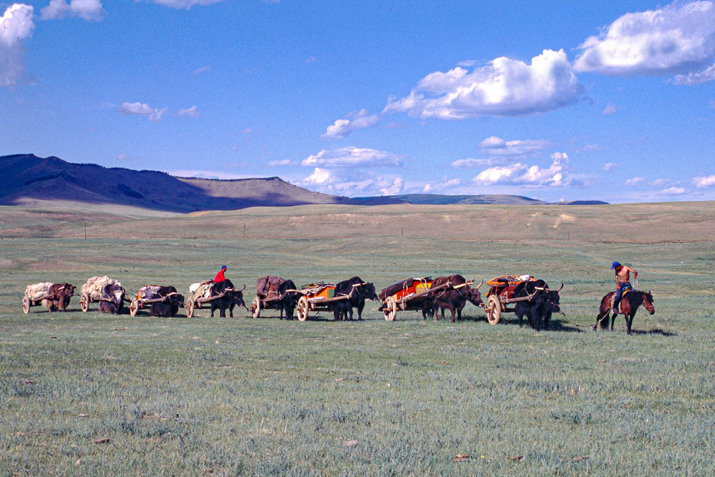
There is no time at Tsagaan Nuur
N 51°21'785'' E 099°21'046''
Day: 131-132
Sunrise:
09:05/09:07
Sunset:
17:17
Total kilometers:
1211
Soil condition:
Ice, snow
Temperature – Day (maximum):
minus 10°C
Temperature – day (minimum):
minus 25°C
Temperature – Night:
minus 34°C
Latitude:
51°21’785”
Longitude:
099°21’046”
Maximum height:
1475 m above sea level
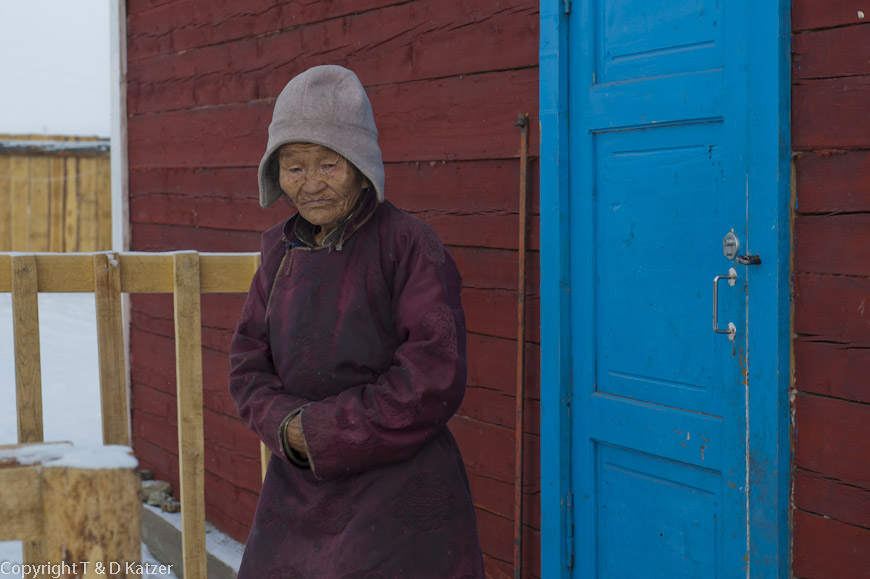
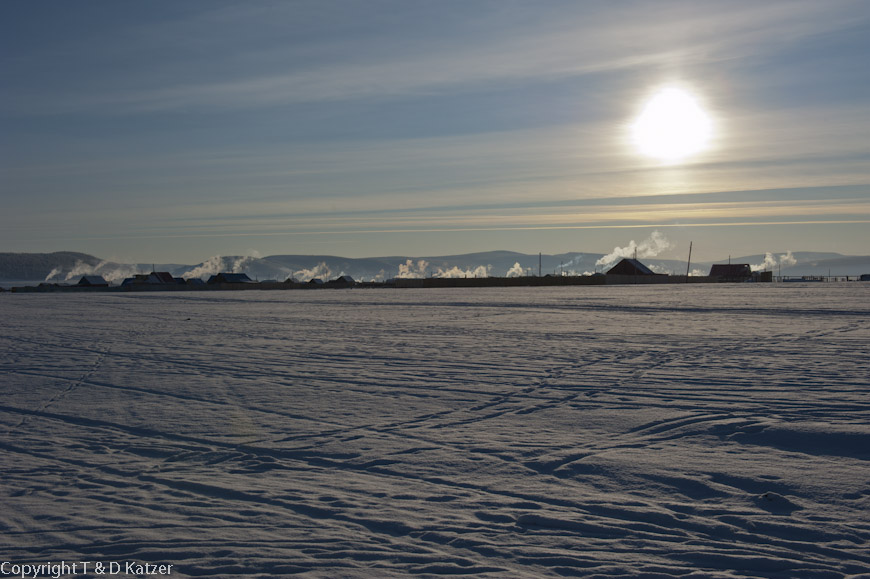



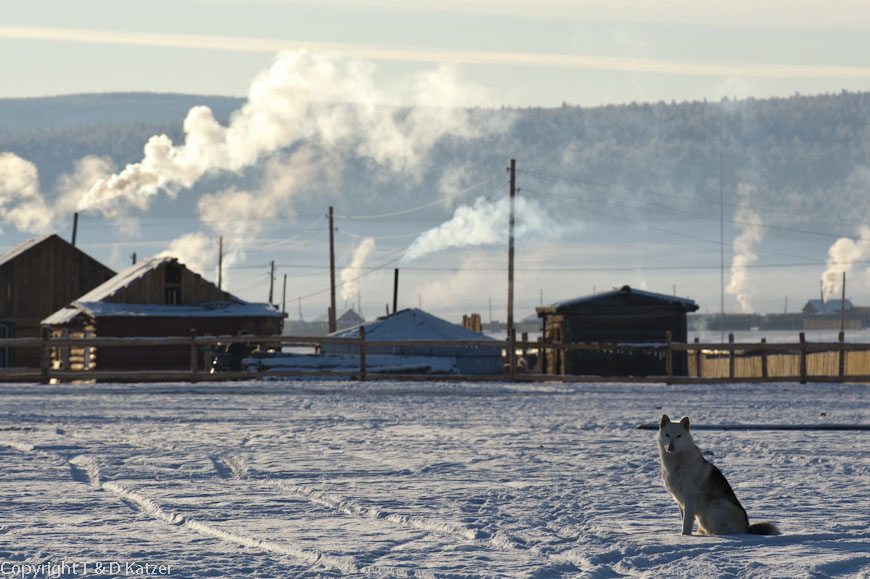
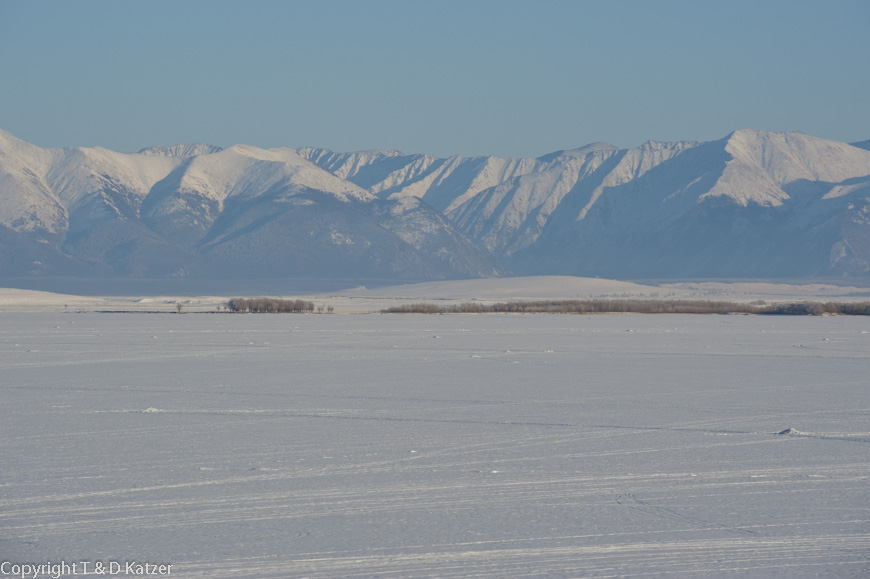
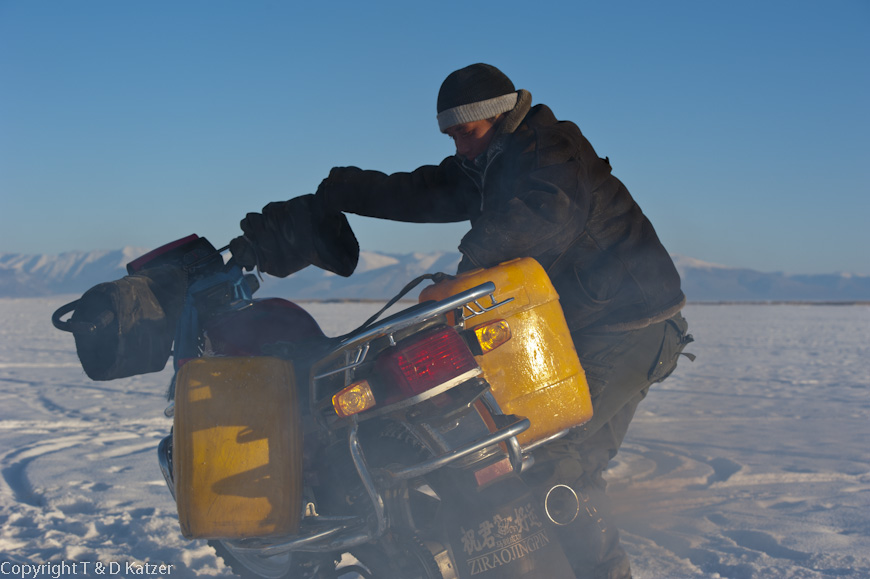
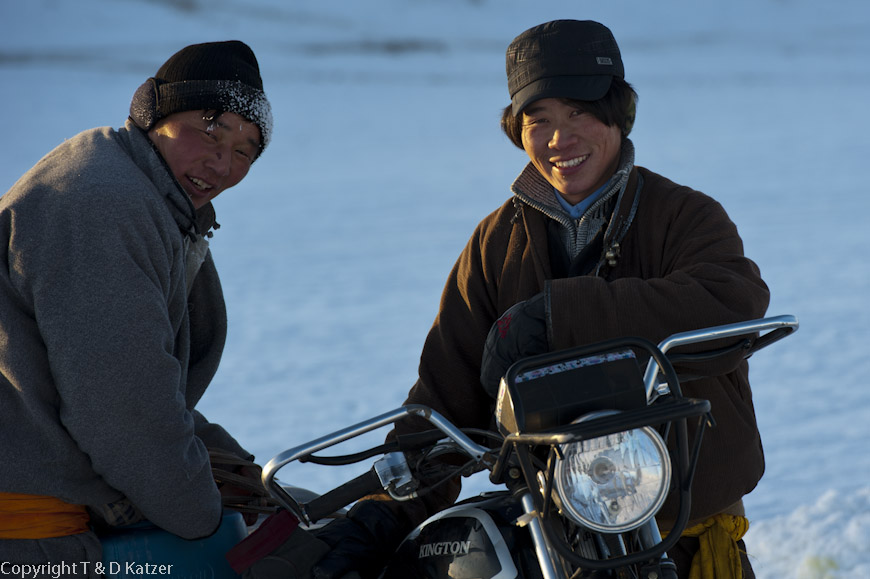
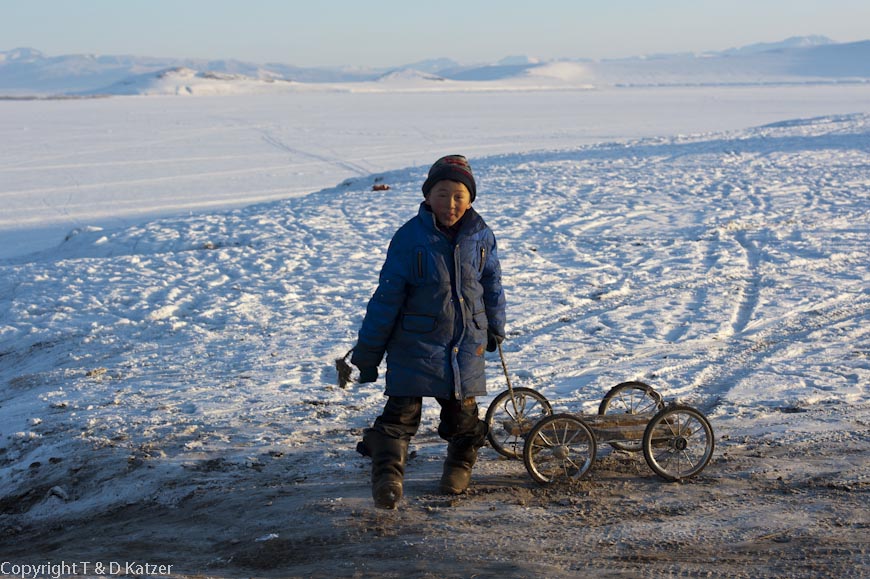

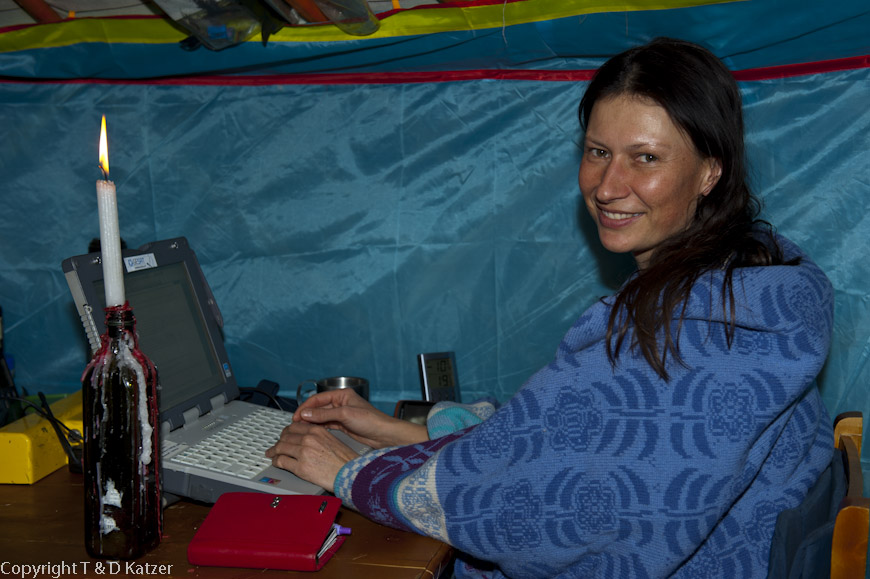
Tanja
On arrival at the “white lake”, the Tsagaan Nuur, our way of life changes from nomadism to sedentary lake dwellers. Denis and I share our tasks and so it’s only natural that he chops the wood and I take on the job of fetching water and shopping. While Denis is busy recording our experiences, I enjoy being out and about and experiencing the small world of this village.
Fetching water always makes me particularly happy. I often meet someone here and have a little chat. Again and again I am surprised, especially by children, how they deal with the cold and their daily duties here. One time I wonder about a twelve-year-old boy. He comes roaring up on a motorcycle, fills two canisters with water, loads them onto the bike and quickly drives off again over the ice. Another time I also meet a twelve-year-old who dips his canister completely into the waterhole with his whole hand without taking off his glove. Only the sight of the wet boy’s hand at minus 26 °C makes me shiver. The thought of it keeps me busy for a while and the next day I try out how it feels to reach into the ice hole. Not so bad for a short time. However, I must point out that I took off my gloves for this experiment.
What I really enjoy in Mongolia is the serenity of the people. The clocks tick a little slower at Tsagaan Nuur. Tsendmaa visits us every day in our yurt. We drink tea and chat or we cook together and I get to learn how to bake bread in our oven. Sometimes I still fall into a familiar pattern and ask when something is taking place, to which Tsendmaa regularly replies: “There is no time at Tsagaan Nuur.”
I have owned a Dell (traditional Mongolian coat) since the stage of the journey from Mörön. This beautiful sheepskin coat has served me well and kept me warm. I learn from Tsendmaa how much care is taken to button the coat properly and also to tie the belt around the waist correctly. For example, clockwise and the end piece is hidden under the lacing from bottom to top. The fact that I am wearing a traditional Mongolian garment meets with the approval of the people. Unfortunately, any equipment on an expedition is subject to heavy wear and tear, so the good piece had to be repaired in a few places. Tsendmaa and Tsenden-ish don’t miss the opportunity to show me how to repair the coat. While the three of us get the Deel up and running again, Ayush is busy making traditional boots. Many people here are talented craftsmen and work very cleanly. I learned a lot from Bilgee. Among other things, how to process felt blankets properly. We use this for our doors and walls as cold insulation.
Denis
I call Tsaya first thing in the morning. Since her cell phone doesn’t always have reception in the taiga, I’m happy to be able to reach her. “And what does it look like? What did the Tuwa people decide?” I ask nervously. “Well, Denis. I called everyone together yesterday who is currently in the taiga. We had a long talk. As I mentioned, most of us agree to share our lives with you. But some are against it. We have found a compromise. What do you think about coming for a month? If no one objects, you can stay longer,” Tsaya suggests. “That’s a good and mature decision. Tanja and I don’t want strangers to take up residence in our house for several months just because they pretend to want to share their lives with us. One month is actually quite generous. Thank everyone for their trust. We will not abuse it. We’ll be back as soon as we can. Now we still have to organize the move of our household to you. Unfortunately, there’s still the problem with your mayor. She is still against it. We are waiting for a meeting with Mr. Ochirhuyag, the mayor of Mörön. If he gives us the promised backing and puts in a personal word for us with the mayoress of Tsagaan Nuur, your Tuwa mayoress can no longer be against it,” I explain. “Okay, good luck then. We look forward to seeing you,” says Tsaya.
In the afternoon, Shagai and his wife Dalai visit us. Since Dalai speaks some English, we can talk. We discuss how to organize the necessary firewood in the taiga. “That’s not a problem. We will cut wood on the edge of the taiga and when we bring your things in with the truck, we can unload them at the Tuwa camp and then fetch the wood,” he explains. We hand him 60,000 tugrik (€34) for a truckload of wood, as requested, and agree to leave on December 15.
“I’m not Tuwa, by the way, but my wife is Dalai,” he explains during the conversation. “Then which tribe do you belong to?” I ask. My father is Buryat. He comes from the region around Lake Baikal. I myself belong to the Darkhad tribe. You know that Mongols, Darkhads and the Tuwa live in this province?” he explains and asks. “Yes, yes, I know. It’s interesting how the tribes intermingle,” I reply. Tsaya tells me that the Tuwa are actually reproducing. The reason for this is the mixing with the other tribes in the region. According to her, the intermarried people are adapting to the Tuwa way of life. This is one reason why the culture of this tribe has a chance of being preserved.
We look forward to your comments!

